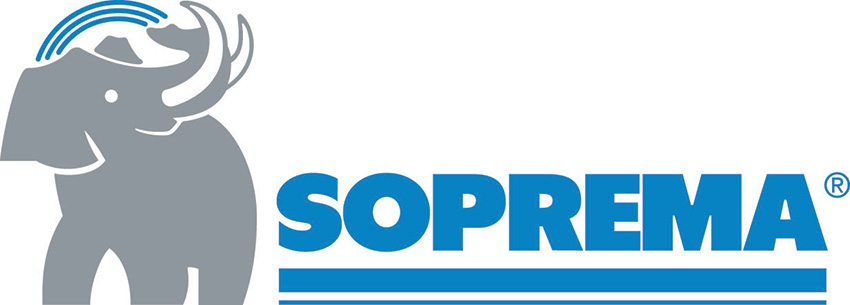Vegetated Roof Systems
Vegetated Roof Considerations
Beyond having a strong understanding of the benefits of a vegetated roof and the components that comprise one, there are some additional considerations to keep in mind when thinking about designing a building to have a green roof. In order for a green roof to flourish, it must be properly designed and constructed.
Condition of existing roof—the additional weight loading from a green roof should not be overlooked. The existing structure ought to be able to bear the extra weight. In addition, it needs to have sufficient drainage which will help reduce loads and prevent excessive saturation of the growing substrate.
Structural capacity—over most concrete roof decks, structural modifications are not necessary. However, for metal and wood roof decks, there may be some structural modifications involved. This is one factor that will guide designers, architects and other building and design professionals, regarding the scope of a vegetated roof project. This is the number one item that needs to be first addressed when designing a new building or retrofit.
Access to the roof—a green roof will require regular safe access for maintenance. It is also important that this access follows all safety procedures and the proper fall protection measures are put in place to allow for safe inspection and maintenance of the roof.
Project location and hardiness zones—when choosing the appropriate plants for the region, it is important to review the U.S. Department of Agriculture’s Hardiness Zone Map, which will indicate a plant’s tolerance for cold. Planting plants, shrubs, trees and more, that are appropriate for the growing zone in which your project is located will ensure that vegetation stays healthy and thrives in the environment.
Purpose of the roof—the purpose the green roof serves is a consideration that takes place during the design phase of the project. Is it for environmental purposes or is the green roof a space that people will go to enjoy? This will inform decisions on the type of green roof installed, as well as the vegetation planted.
Material availability—the variety of materials available to complete the project is numerous and there are new materials entering the market every day. Understand which materials are best suited for the type of vegetated roof you are working on and select those that accomplish the structural and aesthetic needs of the project.
Budget—the creation of a green roof can initially be more expensive than traditional roofing materials; however, there are many benefits that make the investment worthwhile. The price paid for a green roof largely depends upon the style of the roof system chosen.
Maintenance—although these types of roofs can be low-maintenance that does not mean that there is no maintenance involved. Just like a residential garden, vegetated roofs will need to be weeded and fertilized on a regular basis. Building owners should inspect their roofs at least once a month for weeds and seeds, and remove the unwanted material. Pesticides and herbicides are not recommended. Building owners will also need to trim plants and shrubs and keep in mind that the grass may require cutting. During inspection, owners will also want to check whether the drainage system is still functioning properly and remove any leaves blown into the gutters and drains.
They will also want to consider installing automatic or supplemental irrigation for watering of vegetation and check the drainage regularly in order to avoid any water pile-up or water damage to the building’s structure.
LEED certification—valuable green building certifications, such as LEED, may award points for green roofs. The wide variety of benefits associated with green roofs is captured to varying degrees in the U.S. Green Building Council’s LEED rating system. Alone, a green roof will not qualify a building for LEED certification, but it will contribute to the LEED score, along with a set of other measures. Even without legislation in place, green roof installations are picking up steam due to this.
The widespread adoption of green roofs is on the horizon. Green roofs hold keys to addressing several pressing challenges facing modern cities, and they are both accessible and easy to install. A few scattered green rooftops will not be enough to create truly sustainable cities; however, a more holistic embrace of these structural elements is necessary. Whether through government requirement, financial incentive or otherwise, the more vegetated roof adoption can be encouraged, the more our urban environments and the people who inhabit them will ultimately benefit.
As climate change makes regions hotter and urban areas grow, cities with green roofs will experience an array of benefits that will improve quality of life for their citizens, and help propel cities into the next century and allow them to thrive. The history of green roofs shows us that they were originally conceived to regulate the temperature of their environments and assist with rainwater runoff control. Today, they still serve these purposes and can provide even more benefits on top of these. Vegetated roofs show us that we can take wasted grey space, and create a useful green space that generates economic, social and environmental benefits.
Greg Raymond, the North American Manager for Sopranature by SOPREMA, manages the business and product development of SOPREMA’s North American Vegetated Roofing Systems and overburden products.

|
SOPREMA offers a comprehensive line of roofing, waterproofing, wall protection and civil engineering solutions combining superior products and systems with decades of proven performance. Our solutions include industry leading SBS-modified bitumen membranes, polymeric PMMA/PMA liquid applied membranes and synthetic single ply PVC membranes. www.soprema.us |








